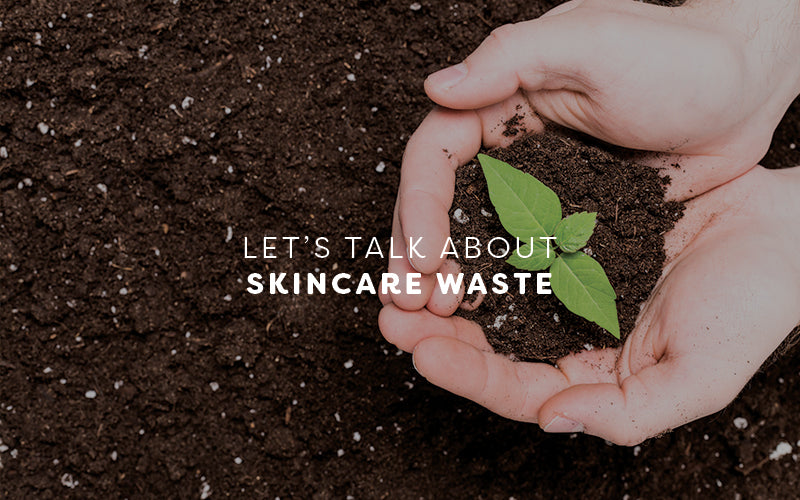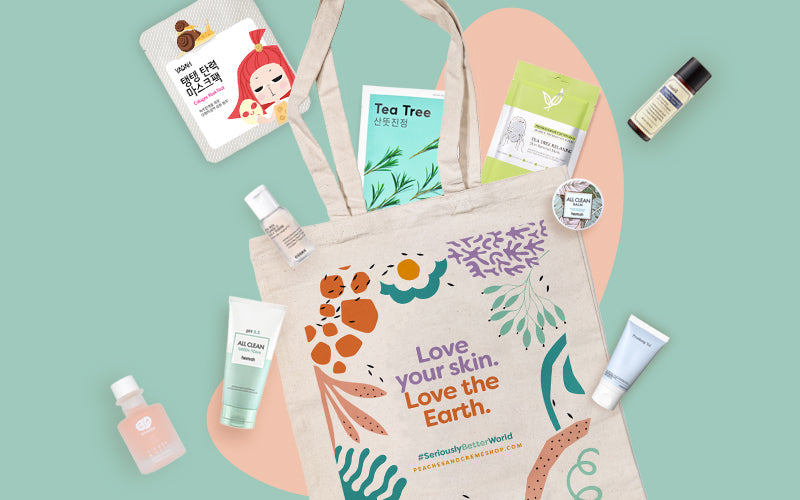The Truth Behind Beauty 🤫

Skincare and make-up bring many of us joy and help uplift our self-confidence. It’s a great way to relax and unwind. But unfortunately, our favourite products give us more than just benefits.
This Earth Month, we want to help spread awareness and talk to you about the ugly truth behind the beauty industry.
Tonnes of trash and millions of euros in waste are created by skincare, cosmetics, and personal care products—all of which either end up in landfills or cause insurmountable damage to the environment. According to research done by Arnaud Plaus, CEO and co-founder of Prose, a staggering 20 - 40% of beauty products end up as waste. And the sad truth is, we’re not only talking about packaging.
Our favourite brands make sure that every product they release are up to standard. Before your go-to skincare or makeup reaches the shelf, batches of formula testers and pilot productions are first made. These do NOT reach the market and are unfortunately on the chopping block and turned to waste. In addition, unsold merchandise, expired, and returned products can no longer be sold.
All these together, from numerous skincare brands across the globe, paint a sad picture on how the beauty industry impacts the environment.
How does the beauty industry affect our environment?

Source: Treehugger | Hilary Allison
Let’s start with production and manufacturing. Not all skincare brands are ethically made and cruelty-free. There are many brands out there that source irresponsibly, calling for deforestation, mining, and unfair labour practices which are unkind to both the environment and people. Unfortunately, this also includes large amounts of water consumption—a staggering hit to the industry’s sustainability. These brands often also test products on animals, with more than 100 million victims per year, most of which are taken from the wild.
Transportation—moving products to warehouses and shipping—leaves a significant carbon footprint as well. This is on top of the air pollution that volatile organic compounds from many skincare products produce.
Leftover products like sunscreen, moisturisers, and the like can also cause intense damage to the environment, especially in the ocean. Parabens, nanoparticles, BHA, and other chemicals found in products may harm coral reefs and pollute waterways. In addition, studies show that two-thirds of fish and 90% of seabirds have ingested plastic waste.
We still have HOPE.
While the numbers paint an ugly picture of the beauty industry, many brands and business owners are standing up to fight and ultimately decrease the environmental impact made by their own companies.
“From a company perspective, we would really encourage companies to measure their waste because you can’t really improve what you can’t measure.” - Sarah Paiji Yoo, Blueland CEO and co-founder
More conscious brands and businesses are now teaming up from top to bottom to get to the root of the problem and work on more sustainable, environmentally friendly packaging and products. They are also ensuring that pilot production, near-expired products, and items with only damaged packaging are not wasted by selling them at special prices.
We at Peaches&Crème are of course doing our part as we believe that every contribution counts in making sure future generations have a healthy planet to call home.
- We carry clean beauty brands as well as brands that strive to lessen their environmental footprint.
- ALL our packaging are recyclable - even the packing peanuts are biodegradable!
- We support EcoCart. For each purchase, we cover the costs of its carbon footprint (calculated via the EcoCart's algorithm) and the proceeds go to protecting the Amazon rainforests.
You can also shop our near-to-expiry products to help us lighten our load on skincare waste. Rest assured that these products are still effective and not harmful to your skin.
For more information about our efforts to be eco-friendlier and climate positive, click HERE.
How YOU can help

The state of skincare waste may seem impossible to dent but you as an individual can still make a major impact—just by finishing your products, being more conscious of your new purchases, and upcycling.
“Before you go out and buy a new moisturizer, finish the one that you have. When you are making a choice to purchase, look for brands that do those best practices, that measure, that are transparent, that talk about solutions.” - Melanie Bender, CEO of Rhode Skin
1. Choose wisely.
The simple act of choosing already takes you a step forward in helping the environment. First, practice intentional skincare or simply buying only products that you know your skin needs. Save the planet AND your wallet!
Next, choose brands that make the effort to be kinder to the environment, sustainable, and cruelty-free. Simply choosing on-sale products also help—if you do not mind purchasing damaged or scratched packaging and products that are near-expiration but are still good, please do! This would take care of unsold merchandise that contribute a significant amount of waste.
Once you have your skincare routine locked down, choose larger sizes or refillable packaging. This way, you can lessen your own lifetime waste and carbon footprint.
2. Every drop counts.
Sometimes, the simplest solution is what you need. Before you go out to get your skincare refill, make sure that you really finish the product. If you have a moisturiser or any other product in a tube, you can cut it in half and scrape every bit from the inside.
3. The gift that keeps on giving.
If you have products that are not compatible with your skin, try not to throw or return them! Most returned products do not get sold again and are damaged purposefully by businesses to be thrown out or burned.
You can use these skincare products on your body!
- Facial wash can be used as hand soap or body wash
- Lotions, creams, and serums can be applied on hands, shoulders or arms
- AHA/BHA can be used for dry areas on elbows, feet or knees
- AHA/BHA toners can be used on armpits
- Sunscreens can be used on your body
Another way is to gift them to your friends or sell them to make sure that someone else can benefit from them instead.
4. Cleanliness is next to environmental friendliness
After finishing a product, being more mindful of how you dispose them is another way to help the environment.
Make sure to rinse out bottles, tubes, etc. AND to remove any stickers, labels, droppers, or pumps before putting them into the right recycling bin. It also helps to keep an eye out for any recycling rules in your city or policies from the brand, and to check the mobius loop to know what plastic was used for the packaging.
5. Before you toss that out...
...try upcycling! The beauty of *ahem* K-beauty skincare is that a lot of thought and effort goes into its packaging. It's common to see K-beauty bottles and think "It's too pretty to throw away," and you'd be correct! Try reusing your jars, bottles, and the like as pretty trinkets like jewelry holders, flower vases, or cotton containers.

It is not a sin to buy skincare products, makeup, and other personal care items. But by being a more discerning buyer, helping us spread awareness about this problem, and putting more care into recycling—YOU can make a positive impact on our environment, too.
Keep glowing, peaches! ✨









Leave a comment